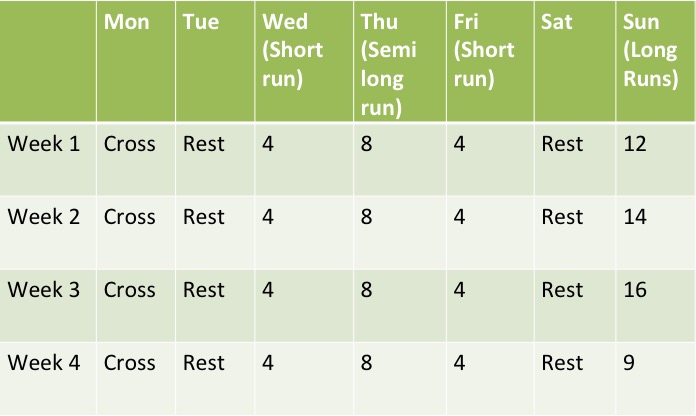You fell sick. You went abroad. Or Chinese New Year just happened. And you’ve fell back on your training. When you get back into the game again, you realize you’re not quite up for it anymore. 2.4km now feels like a half marathon and unfortunately, this feeling has scientific bearings.
With endurance athletes, 4 weeks of detraining would cause your muscles to lose roughly 50% of its ability to store glycogen. The heart, like any other muscles in your body, would show a decrease in stroke volume and cardiac output. Basically, your heart is now less efficient at supplying oxygen. This combined effect would mean that you can’t run as fast and as far.
This all sounds very, very scary.
But fret not! Let’s start by breaking down a typical run program. And then we’d tell you how to get back on track after missing a few weeks.
Long runs
Typically in a training program, you’d find that there is going to be a long run scheduled for each week. It’s to gradually get you use to the distance you’re actually running. You can choose which day that might be. In the first few weeks of a marathon training, it’d start at around 12km and then increase weekly. Every 4th week, it’s step down week. It’s when you kind of rest for another series of mileage step ups in the 5th week.
DO:
- Begin with a 1 week of 30 to 40 minutes runs just to get back into the pace
- Start off your training again at the distance you last ran (or less than that)
- Progress your long run distances by adding only 1 to 2 km weekly
- Complete long runs at an easy, relaxed pace
- If you were sick, keep your longest run at 25 to 28 km for at least a month
DO NOT:
- Start at a higher mileage since you’ve already lost weeks of training
- Go too far too fast. If you can’t reach ideal pre-marathon mileage, cut back on distances in the middle and end.
- Run faster. Endurance and speed training bring about different muscular adaptations. So doing something faster is not going to compensate your endurance detraining.
Short and Semi-Long Runs
These are usually done midweek to clock mileage. Endurance training fundamentally requires you to be on your feet. Going through the motions of running would teach your feet to adapt to the amount of time they spend slamming against the floor. Remember that endurance training is different from speed work. So go at a low to moderate pace, especially after a break. You should be able to comfortably maintain a conversation.
Cross-Training Days
Regardless of what you’re training for, cross-training takes the load off your feet and leg muscles. It also gives you an opportunity to strengthen the other muscle groups that are important to runners, such as your core. Take this opportunity to try out new exercises and keep your body guessing. If you’re just back from a long break, you might want to make this a complete rest day instead to avoid overexerting your body.
For more advanced runners

You might have hill and interval trainings, on top of the standard training program described above. Start out with 1 week of pure running. Easy pace, maybe even at shorter than usual distances for 30 to 40 minutes. Then in week 2, include long runs but continue to do your runs at an easy, relaxed pace. Only add back hill and speed trainings in week 3. It takes about 3 to 4 weeks to get back to your pre-break fitness level.
As Hal Higdon says, “A marathon is every runners horizontal everest.” That level of resilience and endurance is not going to strike at you like a lightning. It’s going to take months or even years of training. Don’t let a few weeks trip you up. More importantly, don’t make the mistake of trying to bounce back too quickly as well. Or you’d end up with an injury and let the tripping keep you down.



